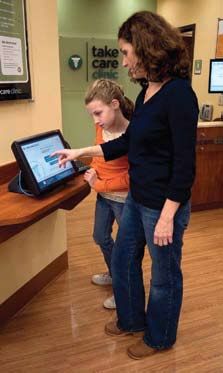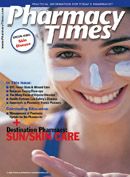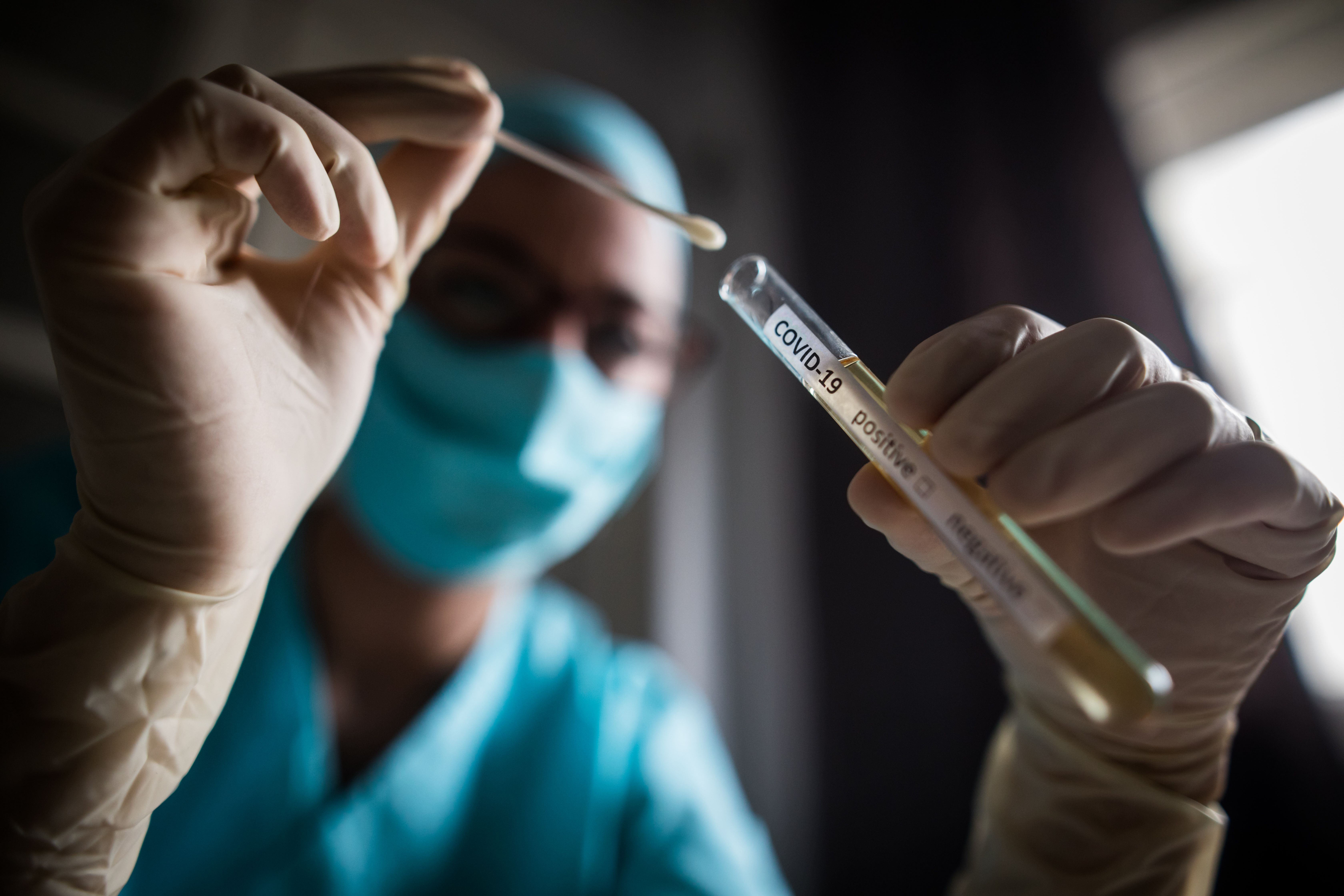Publication
Article
Pharmacy Times
Take Care Clinics Help Patients Do Just That and More
Author(s):
Though most would agree that the current health care system has a number of ailments, some areas are in better shape than ever. Never before could one enter a medical facility and be treated for an illness after a minimal wait, and then be able to fill any necessary prescriptions and perhaps even pick up a few groceries all in the same place. Now, it is not only possible, but quickly becoming the norm for many.

As the largest US provider of convenient care clinics, Take Care Health Systems is helping to revolutionize health care for families throughout the country. The growth of Take Care Clinics stems largely from the company’s innovative practices, but a credo of “doing good while doing good business” may just be the real secret to their success.
“We’ve engaged everybody in that mission,” said Sandra Ryan, chief nurse practitioner (NP) officer with Take Care Health Systems, which is the main entity within Walgreens Health and Wellness Division. “Walgreens is a wonderful company to work with, and they have a visionary approach. I think it’s really cultural…if you ask people what’s on their mind, it’s health care. Being there for the community and having affordability is huge.”
Providing evidence of just how huge these factors are is the fact that Take Care Health Systems continues to thrive in spite of, and perhaps because of, the economic downturn. It is no small wonder, as the company was formed on the premise of creating savings, according to Ryan. The 343 Take Care Clinics located in 19 states are going strong, offering patients access to care that they might not otherwise receive.
Take Care Recovery Plan
The Take Care Recovery Plan has taken things a step further, offering free care until the end of the year to existing clinic patients who lost their job on or after March 31 and do not have insurance. According to Ryan, about 1 million patients in the Take Care system qualify for the program. “It has been extremely well received,” said Ryan. The Recovery Plan provides muchneeded help to patients while helping to drive awareness of Take Care Clinics, making it a win—win situation.
“What is really unique is, we’ve developed an access point into health care that’s never existed,” said Ryan. “We’ve made it more approachable.” The need filled by Take Care Clinics becomes more apparent when one takes into account that 30% of patients do not have a health care home, and another 30% are uninsured or underinsured. The convenience factor stems from the fact that 60% of Take Care Clinic patients live within 5 minutes of a store location, where NPs or physician assistants (PAs) are on hand 12 hours a day, 7 days a week to attend to a variety of health care needs. Perhaps what fuels patient loyalty is the faith they place in health care professionals at Take Care Clinics. Ryan cited the Gallup poll that, year after year, has placed nurses and pharmacists in the top 2 spots for the most trusted professions.
Convenience, Accessibility, and Personal Touch Drive Growth
Patients with illnesses like strep throat, ear and sinus infections, pink eye, and poison ivy all can receive acute care at Take Care Clinics. They can then enjoy the convenience of walking a few feet to a Walgreens pharmacy counter to have a prescription filled or obtain an OTC medication to help with their condition. Those treated at the clinics have the option of taking a prescription elsewhere, but many choose to use Walgreens because of the convenience and accessibility, Ryan said.
Another factor that helps to keep patients coming back is the follow-up phone call they receive within 48 hours after visiting a Take Care Clinic. “They call it ‘the wow,’” said Ryan. “It’s a really nice touch to show our commitment to them. I think the patient feels very supported in the environment.”
With patient satisfaction score percentages in the 90s, it makes perfect sense that patient word-of-mouth serves as the biggest promoter for Take Care Clinics, as individuals tell others about the positive experience they had, and, of course, the convenience they enjoyed.
The one-stop nature of the experience also helps to ensure greater compliance and adherence, according to Ryan. In an average medical setting, there is no way of knowing whether a patient is even filling a prescription after leaving the office, she said. With Take Care Clinics, when a patient brings a prescription to the pharmacist working in concert with the NP or PA in the clinic, the opportunity for collaboration arises, and both clinicians have a better chance of observing patient outcomes.
An electronic health record system created within the company ties all of the clinic locations together, not only allowing for the observation of adherence and outcomes, but also ensuring quality of care through patient-protecting checks and balances, as well as drug cross-referencing software. Electronic prescribing helps to dramatically reduce medication errors.
“There’s a real partnership on how to treat the patient,” said Ryan. The NPs or PAs running the clinics meet with pharmacists and store managers on a weekly basis to discuss patient trends and other issues. Teamwork between the clinicians also happens daily, as pharmacists work with those in the clinic to find the most appropriate and cost-effective treatments, aimed at prevention where possible. “Historically, nurses have always worked with pharmacists,” Ryan explained.
Saving Money and Lives
It is Take Care’s policy to use generic drugs whenever appropriate, creating savings where possible. In addition, the company works with a wide number of insurers. “We build our coverage so that people can come in with or without insurance,” said Ryan. For example, a patient with a sore throat can expect to pay between $59 and $80 to be treated at a Take Care Clinic, which would include a strep test. For the underinsured and noninsured, a primary care physician (PCP) visit or, during off hours, a visit to an urgent care facility or emergency department would cost about 4 times that amount, according to Ryan.
Then, there are the instances of savings that go beyond dollars. Ryan recounted stories like that of a patient who looked befuddled while looking at OTC wart removal options. The NP from the in-store clinic approached him and brought him in for a visit, later discovering that what he thought was simply a wart was actually cancer. Others received care in the nick of time, which at times has made the difference between life and death, Ryan said.
When the care needed falls outside of what is available through the clinic, Take Care staffers will refer a patient to a PCP or find the closest emergency room with the shortest wait time. In general, NPs and PAs at the clinics do what they can to help find health care homes with PCPs for patients who do not have them, said Ryan.
Outlook
Take Care Clinics have expanded their services to include vaccinations, health risk assessments, and follow-up care. Further growth is set to bring injection and infusion therapies, which have been piloted in Florida, as well as chronic disease treatment that will employ pharmacists for disease and medication management, and skin service offerings like cryotherapy and minor incisions and drainage.
The future for Take Care Clinics appears bright for both the company and its patients. “When we started the company, we always said we would go where patients take us,” said Ryan, adding that although the current health care system is not built around the patient, Take Care is. “We’re on the cutting edge. We’re ahead of everybody.” â–
Taking Care in the Summer Months
Summertime is here, and that means kids are out of school. Before the youngsters can be sent off to enjoy some fun in the sun at camp or playing recreational sports, they must have a physical. Take Care Health Systems is helping out by offering $30 camp and sports physicals in Take Care Clinics. The program runs through September, so parents can take advantage of the value for back-to-school physicals as well. “It’s a great opportunity to expose people to our clinics. As much as we’re there when they’re sick, we’re also there for well visits,” said Sandra Ryan, chief nurse practitioner officer with Take Care Health Systems.
The physicals go beyond a routine examination in that the nurse practitioners or physician assistants administering them have the opportunity to get an idea of a child’s emotional health, as well as give valuable advice. A clinician might be able to talk with a younger child about bike safety and helmet-wearing or provide a teen with important information about sexually transmitted diseases.
Adding to the value of the physicals, Take Care Clinics also offer a set of summer survival tips for parents, including advice on how to:
- Avoid heat stress and heat stroke
- Avoid insect and tick bites
- Avoid sunburn
- Have fun and play safe


MDMA Rejected: The Story of a Study Participant Entrenched in Ethical Violations and a Data Breach





